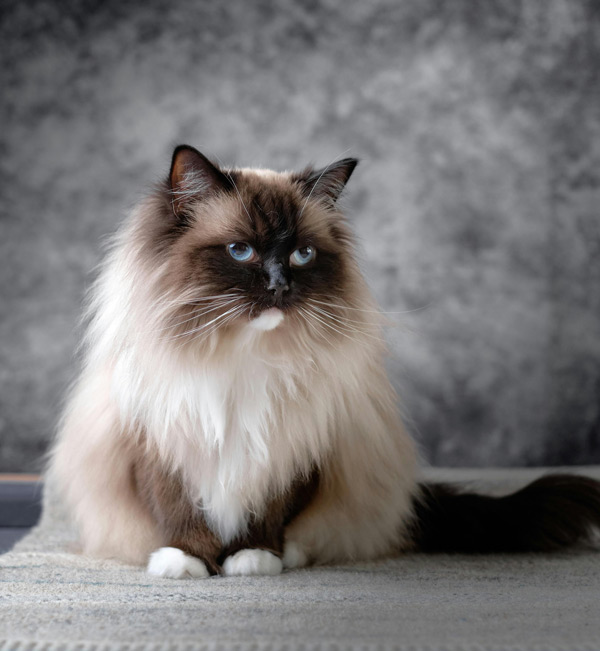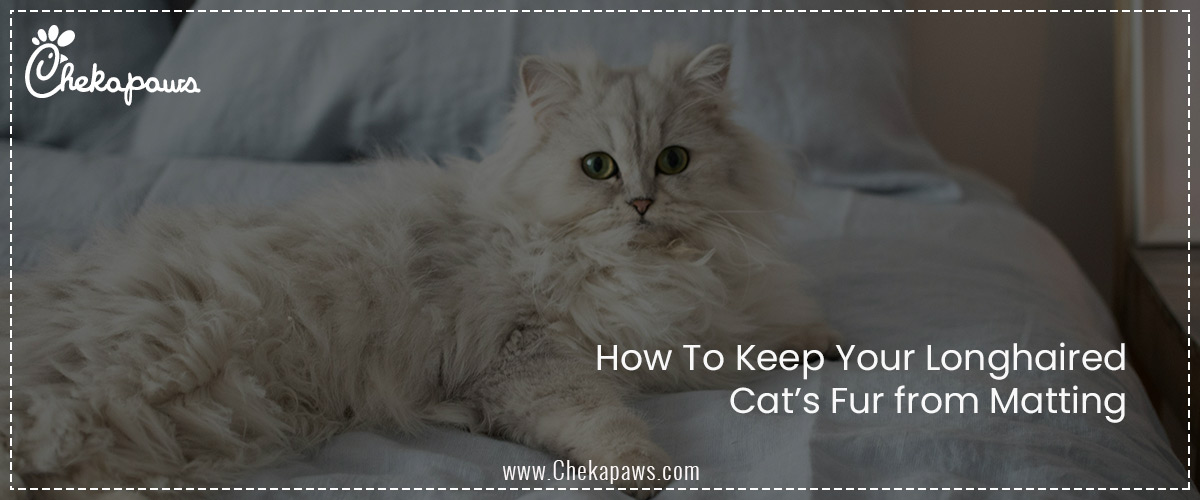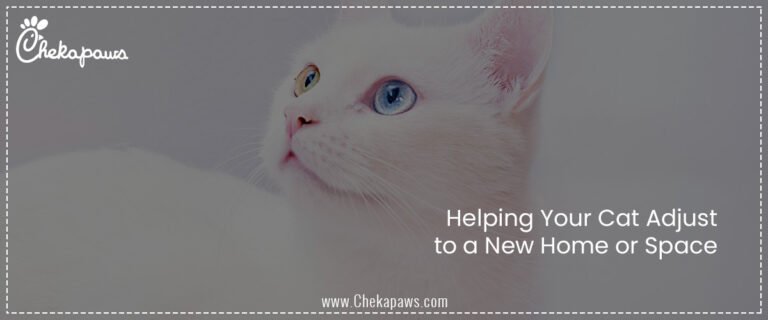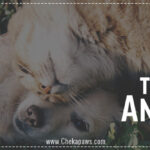As a pet owner, I am aware that maintaining the longhaired cat’s royal style is not easy. They flow about the house like little, regal lions thanks to their smooth, flowing fur. Along with their friendly traits, breeds such as Persians, Ragdolls, Maine Coons, and Himalayans are prized for their rich fur. Longhaired cats are especially prone to matting, and without regular care, their coats can easily get tangled, knotted, and even uncomfortable. Nevertheless, that beauty does not come without a price.
Matted fur can cause discomfort, skin infections, and other health issues; it’s not only a cosmetic concern. It is your responsibility as a responsible cat owner to keep your longhaired pet clean, comfortable, and free of mats.
The causes of matting, daily grooming methods, the right equipment, and even dietary advice for maintaining the health and smoothness of your longhaired cat’s fur are all covered in this extensive guide. Regardless matter your level of cat ownership expertise, you will leave with practical tips to make grooming more pleasurable and easy for you both.

Understanding Cat Fur and Matting
A soft undercoat and an outside layer of guard hairs make up the thick double coat of longhaired cats. Their fur is prone to tangling due to its long length and fine undercoat, particularly in areas that are prone to friction, such as the area behind the ears, beneath the legs, around the neck, and close to the tail.
What Causes Matting?
- Shedding: Dead hairs tangle with the surrounding fur when they fall out but do not completely separate from the coat.
- Moisture: If wet fur isn’t properly dried, it tangles easily.
- Absence of grooming: Mats easily form if daily brushing is neglected.
- Movement/friction: Tangles are more likely to form in areas that brush against one another or against surfaces.
- Health problems: A cat may not be able to properly groom oneself if they are obese, have arthritis, or are ill.
- You can provide preventive care more successfully if you are aware of the underlying cause of matting.
The Risks of Matted Fur
At first, mats may appear like minor issues, but they can cause major problems:
- Skin Irritation: Tight mats cause irritation and redness by pulling at the skin.
- Pain and Limited Mobility: Mobility may be restricted by large mats placed under the arms or around joints.
- Infections & Parasites: Mats collect moisture, dirt, and waste, which makes them an ideal habitat for fungi, bacteria, and fleas.
- Behavioral Problems: A cat who experiences ongoing discomfort may exhibit aggressive, withdrawn, or irritated behavior.
- Vet Visits and Sedation: Professional grooming under sedation may be necessary for severe matting, which is dangerous and upsetting for both the cat and the owner.
Daily and Weekly Grooming Routines
The first step in avoiding mats is to develop a grooming routine.
- Daily Routine (5–10 minutes): Gently brush or comb the cat’s coat using a slicker brush.
- Pay attention to regions of friction, such as the chest, abdomen, under legs, and behind the ears.
- Give praise and goodies as rewards.
- Weekly Routine (15–20 minutes): For more thorough combing, use an undercoat rake or de matting comb.
- Examine the entire body, including the base of the tail and the paws.
- Take action when you notice early indications of matting.
Tools of the Trade: Best Grooming Supplies
Grooming is made easier and more effective with the correct equipment.
- Essential Grooming Equipment: Slicker Brush: Excellent for regular brushing and hair removal.
- Comb with a wide tooth: aids in detangling without exerting excessive force.
- During shedding seasons, an undercoat rake is used to remove loose undercoat.
- De matting Tool: Made to gently shatter tiny mats.
- For more difficult tangles, use a mat splitter or mat breaker.
- Grooming Glove: An excellent first brushing item for cats.
- Select tools based on how comfortable your cat is. Develop trust gradually by starting out small and soothing—never a penalty.
Techniques for Effective Grooming
Complete Grooming: Create the The atmosphere: Select a peaceful moment when your feline feels at ease.
- Begin by using a soft brush or grooming glove to ease into the session.
- Brush in Sections: Work your way down the body from the head.
- Use Light, Brief Strokes: Steer clear of tugging or pulling.
- Examine While Grooming: Keep an eye out for any indications of skin problems, bumps, or mats.
- Mat handling: Keep the mat separate from the fur around it.
- To prevent tugging on the skin, grasp the base of the fur.
Bathing: Yes or No?
Although cats typically groom themselves, taking a wash once in a while can help maintain their coat.
- When to Bathe: If there are any odors, sticky materials, or a greasy coat on your cat.
- to remove dead fur during periods of severe shedding.
- as advised by a doctor for skin conditions.
- How to Bathe: Never use human shampoo; always use cat-specific shampoo.
- Rinse well to prevent residue.
- If tolerated, dry with a cloth and then a low-heat blow dryer.
Nutrition and Its Role in Coat Health
The food your cat eats has a direct impact on the condition of its fur. Poor nourishment causes brittleness, dryness, and increased shedding, all of which are ideal for matting.
- Omega-3 and omega-6 fatty acids are nutrients that support the smoothness and lustre of healthy fur.
- High-quality protein: Encourages the development and renewal of hair.
- Hydration: Drinking water keeps skin and fur from drying out.
- Supplements to Take into Account: Fish Oil
- Omega-rich foods
- Probiotics for healthy skin
- Before introducing supplements to your cat’s diet, consult your veterinarian.
Preventing Seasonal Shedding Problems
Although they shed all year round, longhaired cats shed more in the spring and autumn.
- Advice for Handling Seasonal Shedding: During shedding seasons, brush more frequently—daily if possible.
- Make use of a de shedding device such as the Furminator.
- Keep furniture covers and lint rollers close at hand.
- Regularly hoover pet hair to avoid airborne allergies.
- Although shedding is normal, preventing it lowers the likelihood of matting.
Professional Grooming Help
Even the most dedicated cat owner may require expert grooming services.
- Indications That You Need Expert Assistance: You discover more mats than you can manage.
- You can’t groom your cat at home.
- It appears as though the coat is overly knotted, oily, or drab.
- When selecting a groomer, look for services tailored to cats.
- Consult reviews and get suggestions.
- Make sure the groomer use soothing, non-stressful techniques.
- For cats with lengthy hair, getting professional grooming every 6–8 weeks might be quite beneficial.
Special Care for Senior and Special-Needs Cats
Cats who are old or sick frequently have trouble grooming themselves, which makes them more prone to matting.
- Senior Grooming Advice: Because elderly skin is more delicate, be extra gentle.
- Shorten your sessions and use gentle brushes.
- Divide the grooming process into several brief periods.
- Examine the spine, back legs, and underarms carefully.
- Work with your veterinarian to develop a grooming regimen that is appropriate for your cat’s physical state.
Dealing with Severe Matting
Despite your best efforts, mats may develop and get severe.
- What Not to Do: It is quite dangerous to attempt cutting mats with scissors.
- Water tightens mats, so avoid bathing a matted cat without first combing.
- What You Should Do: To detangle the fur, use a detangling spray.
- Try using a mat breaker to work in small portions.
- Consult a veterinarian or groomer if the mat is excessively tight.
- Check for skin sensitivity after removal and apply any necessary treatment.
- Mats near delicate areas, such as the face, genitalia, or armpits, should only be handled by professionals.
Grooming Kittens Early: Prevent Problems Later
Long-term grooming of a long-haired kitten will be easier if you begin early.
- Advice for Kitten Grooming: Begin when the kitten is 8–10 weeks old.
- Sessions should be brief (2–5 minutes).
- Apply grooming gloves or gentle brushes.
- Afterward, reward with snacks or recreation.
- An mature cat that is used to being handled and brushed will develop into a patient, mat-free adult cat.
Common Mistakes to Avoid
Avoid these mistakes that could undermine your grooming efforts:
- Inconsistent Brushing: Mats can result from missing even a few days of brushing.
- Brushing Only Visible Areas: Remember to brush the chest, inner thighs, and belly.
- Using the Wrong Tools: For long fur, certain brushes are excessively rough or inefficient.
- Ignoring Mats Too Long: Take care of tangles while they’re still controllable.
- Early finding of errors allows you to make necessary corrections before problems worsen.
Lifestyle Adjustments That Help
A few lifestyle and environmental changes can help maintain the best possible condition for your cat’s coat.
- Beneficial Modifications:
Humidity Control: To avoid static and knots during dry seasons, use a humidifier. - Clean Living Spaces: Minimise contact with moisture, oil, and grime.
- Pet furniture: Cover areas your cat uses frequently with blankets and mats that can be washed.
- Frequent Coat Checks: Include brief examinations in your everyday schedule.
- A healthier coat is a result of everything you do to make your surroundings healthier.
Conclusion: A Happy, Tangle-Free Cat
It takes a lot of love to keep your longhaired cat’s fur from matting. The advantages overcome the costs, which include patience, consistency, and the appropriate equipment. A cat that keeps up their appearance is not only more at ease and healthy, but also happier and more self-assured.
Create a basic grooming schedule at first, modify it to fit your cat’s needs and personality, and get assistance when required. You will become an expert at keeping your feline companion fluffy, mat-free, and gorgeous with time and effort.







